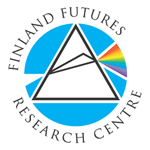Henry Kwok is a business developer and entrepreneur, ex-Global Partner with Haines Centre for Strategic Management for the Asia-Pacific Region, Singapore. He is Director/Vice-President, National University of Singapore, Business School Alumni Association. He has held directorships in several local companies which he has helped set-up and expand internationally.
Q. What are the best methods to identify WI-WEs? How environment scanning should work in strategic management?
- Foresight shouldn’t be about picking individual WEs in strategic management. It is about understanding Complex adaptive systems and about understanding when to react, change or adapt - sometime companies react too fast. There are always tipping points in systems, thus we should cluster information to watch out for possible avalanches in advance.
- The key question is how well we are able to see the development within the system and how timely we are able to change our strategy to changing environment, thus it is not so much how well we plan but also how well we can respond to changes – especially wild cards
- WI are about random side of the world – we can’t be preparing for all of such issues. If there are many random elements we must bear in mind that no plan can take them into account. In planning we are reacting to what we know and what we have perceived as important. The best plan is one which is flexible allowing us to be ready to change anytime...
Q. What kind of WI-WEs are interesting in strategic management and what kind of WI-WEs your company is currently working with – what kind of signals are attempted to be detected in your environment scanning?
Visions or dreams of what we would like to see or create are much more important issues than WEs. A strategy should be flexible so that when we see the sudden and pertinent changes, we change your strategy as soon as possible.
We scan the environment for wide range of factors on regularly basis. We look for trends in socio-demographic, competitions, environment, politics, technologies, industry, community and stake holders’ preferences. Some key trends are the graying population, the internet culture which impact on interpersonal skills and values, flattening organisations and their impact on talent management and skills
Q. Do you prefer other definitions of wild card and weak signals? If these concepts are ambiguous in your opinion, how could they be more clarified and better defined?
- WI is anything that would change the way we do things now. While it’s easier to anticipate big moves, it is the small and unexpected events that tend to bigger impact on us. I do struggle with the term wild cards – it is no longer wild if we can see it coming – I would prefer to call them weak signals.
Q. Are there interesting lessons from your previous foresight / environment scanning studies that employed the WI-WE approach?
We shouldn’t look the WI-WEs individually. We should see how they are interlinked. It’s more like joining the dots to form the figure. How they cluster and evolve give us a better handle on anticipating the probable outcomes.
- It is like in the book World is flat – it is a question of how we can see link between fall of Berlin wall to the rise of globalization.
Q. Can you envision major wild cards (positive or negative) that may occur in the next 20 years?
- Something major will happen in the way we transfer knowledge.
- Spam of real life can become acute. Companies are able to provide information to people 24/7 whether people want it or not.
Q. What will be the dramatic impact of the wild cards you mentioned, and how it should be addressed by future research? In which field?
- Privacy is gone and we face true information overflow.
- more research need to be done on the need to protect privacy and the need to be able to filter the constant stream of data into useful and meaningful information we can act on
Q. What are the weak signals that (if detected) could hint at a growing likelihood (or imminent realization) of the wild cards that you mentioned?
Spam in the Internet. On one hand, this could be a nuisance but a smart analysis of spam can give us some marketing trend that we can capture.
Q. Can you identify any causal relationships between the topics you mentioned?
Real life spam evolves gradually into acute issue.
